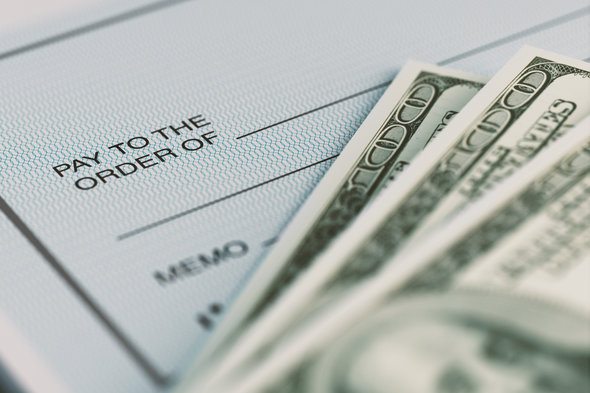It wasn’t that long ago that paying bills or getting a paycheck meant waiting for a check to move through the mail system. Nowadays, many of these payments happen online through an electronic network called the Automated Clearing House (ACH). Tens of trillions of dollars move through the ACH each year. Plus, people are increasingly using this network in place of credit card and debit card payments. But exactly what are ACH payments and how do they work? This is what you need to know.
Consider working with a financial advisor as you seek the most efficient way to move your funds.
What Are ACH Payments?
In the simplest terms, ACH payments are electronic payments sent from one bank account to another account at a different bank.
They are called ACH payments because they go through the Automated Clearing House, or ACH. This is an electronic network that businesses, consumers and financial institutions use to accept and disburse payments. NACHA (previously the National Automated Clearing House Association) is the not-for-profit company that manages the network. It is not directly involved in ACH transactions but rather, develops, administers and governs the ACH Network, which includes all institutions that use the ACH. These institutions in the ACH Network pay fees both annually and on a per-transaction basis in order to help cover the ACH’s administrative costs.
As more and more business moves online, banks and businesses continue to use ACH payments more often. In the first quarter of 2025 alone, the ACH moved about $22.1 trillion through payments like payroll direct deposit, government and Social Security benefits, mortgage and bill payments and online banking payments.
ACH payments can occur between businesses or individuals or between an individual and a business. You may have even sent money through the ACH without knowing it. For example, payments you make via Venmo, Paypal and Square Cash all go through the ACH.
If you plan to make an ACH payment through your bank, you should check your bank’s regulations around these transactions. For one, banks often limit how much money you can send on a daily and monthly basis. You also generally cannot send money internationally. In the event that you do not have enough funds in the originating account, you could also get hit with a fee (and a reversed transaction).
Need a savings account? Try our savings account comparison tool.
How ACH Payments Work
You are probably already familiar with direct deposit for your paycheck. This type of transaction is a common example of ACH payments. To understand how a payment moves through the ACH, let’s look at how your paycheck goes from your employer into your bank account.
The payment starts with the originator. The originator is the person or organization that initiates an ACH transaction. In this case, your employer is the originator. Your employer requests to send a payment from their account to your account.
Next, the ACH request goes to the originator’s financial institution, or Originating Depository Financial Institution (ODFI). This would be your employer’s bank. ODFIs collect all ACH requests and send them to an ACH operator.
The ACH operator is a middleman that processes all transactions moving through the ACH. It receives requests from the ODFI and distributes them to the appropriate institution.
There are two ACH operators in the United States. One is FedACH, which stands for Federal Reserve Banks’ Automated Clearing House. It’s the collection of all the Federal Reserve Banks and handles the majority of ACH transactions between commercial banks in the U.S. The other operator is the Electronic Payments Network (EPN). EPN is a private-sector ACH operator.
The ACH operator will then send the ACH request to the Receiving Depository Financial Institution (RDFI). The RDFI will credits (or debits) the funds to the receiver’s account. In this payroll scenario, your bank is the RDFI, and you are the receiver. You, as the receiver, will have already set up direct deposit by providing your employer with your bank account information and authorizing the transactions.
How Long Do ACH Payments Take?

ACH transactions don’t send in real time, so you don’t see money added to your account as soon as someone authorizes a payment. This is because ODFIs don’t send transaction requests immediately upon receipt. Instead, an ODFI collects a number of requests and sends them in a batch. The operator then collects a whole day’s worth of requests before processing and sending them to the appropriate RDFI.
Because of this, ACH payments can take a few business days to move through the system. However, it’s likely that payments will one day move instantly. New rules from NACHA dictate that ACH debit transactions must now be processed by the next business day. This is only one kind of payment, but it still represents an increase in transaction speed.
ACH transactions can take even longer due to reversals. If there’s an error in your bank account number or your employer’s information, a transaction can be reversed. The RDFI will notify the Federal Reserve about the returned payment. It’s then up to the ODFI to check with the Federal Reserve if any of their payments have been returned.
Why Use ACH Payments?
The main alternative to ACH payments is a physical check. People have used checks for years, and they get the job done, but ACH payments are faster, cheaper, more reliable and more secure. With electronic payments, you don’t have to worry about the costs of buying, printing and processing checks. You don’t have to wait for checks to travel from the sender to the post office and then to the receiver. There’s no physical check to lose or damage in the mail, and fraud is rare with ACH payments.
ACH payments are simply more convenient for both consumers and businesses. For example, many people now pay their bills through online bill pay programs. You just have to connect a bank account to your online account. You can even set up recurring payments to simplify future payments.
ACH payments also provide a cheaper option than checks and credit card payments. As an individual, you can make most ACH payments for free, but some bank or bill pay systems might charge a fee of about 20 cents to $1.50. Businesses may pay slightly less: 26 cents to 50 cents.
In recent years, ACH payments have become more common for person-to-person transactions. In particular, services like Venmo, PayPal and Square Cash allow you to easily pay others without the need for physical cash, checks or credit cards.
What Are the Drawbacks of Using ACH Payments?
ACH payments aren’t always instant. Even though they’re faster than mailing a check, ACH transactions can still take one to three business days to complete. This delay happens because banks process ACH transfers in batches instead of sending them right away. If you need to send money quickly, such as paying a bill due today or moving funds in an emergency, an ACH transfer might not be the best option.
Another drawback is that ACH transfers usually stay within the U.S. Most banks won’t let you use ACH to send money internationally, so you’d need a different method if you want to send funds abroad. Also, banks often set daily or monthly limits on ACH transfers. If you need to send a large amount, you may need to split it into smaller transfers or pay a fee for a different service.
ACH payments can also be reversed if there’s an error or a dispute. For example, if someone enters the wrong account number or claims a payment was unauthorized, the transaction might be pulled back. This could cause problems if you’ve already used the funds you received. While fraud is less common with ACH than with checks, it’s still possible, so it’s important to double-check account details before sending or receiving money.
Bottom Line

ACH payments refer to electronic payments. They have become the norm as the world moves more and more to online banking. Now you no longer have to worry about writing checks and sending them through the mail. You can pay your friends back for that dinner last week electronically and almost instantly. Ultimately, ACH payments make it easier, faster and safer to send and receive payments. Consider working with a financial advisor who can help you manage your money and simplify your online banking needs.
Tips on Finance
- A financial advisor can offer valuable insight and guidance for retail investors on how to handle money challenges. Finding a financial advisor doesn’t have to be hard. SmartAsset’s free tool matches you with vetted financial advisors who serve your area, and you can have a free introductory call with your advisor matches to decide which one you feel is right for you. If you’re ready to find an advisor who can help you achieve your financial goals, get started now.
- Use our simple savings calculator to see how quickly your savings will grow.
Photo credit: ©iStock.com/Petar Chernaev, ©iStock.com/MicroStockHub, ©iStock.com/PeopleImages
